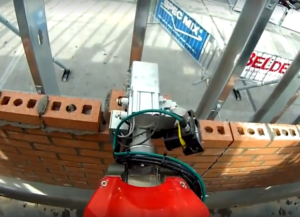Robots, Affordable Housing, and Moving to Florida
One of the issues the Florida Legislature will address again in its upcoming session is affordable housing. There’s simply not enough, especially workforce housing in South Florida. A new report shows one solution to the problem is right in our own existing neighborhoods and may take just years rather than decades to solve. It tops our look at Construction & Real Estate news this week.

Credit: Ridofranz
Affordable Housing: Zillow, the online real estate marketplace, is out with a new report, arguing that even “minimal densification” could yield millions of new home units. By relaxing zoning rules in single-family neighborhoods, communities could realize surprising results.
Zillow research in 17 metro areas found that allowing just one in 10 single-family homeowners in a given neighborhood to build a backyard cottage, add a basement apartment or put a livable in-law suite above a garage would provide a solution to the affordable housing crisis. Plus, it isn’t likely to drastically alter the existing streetscape of neighborhoods.
Moving to Florida: We all know that Florida is a popular moving destination. Now a new study details the attraction, ranking Florida 7th among the 50 states for popularity. According to United Van Lines’ 43rd Annual National Movers Study, more people moved to Florida for retirement (40.5%) and for lifestyle change (23%) in 2019 than any other state. A new job brought 28.5% of new arrivals to Florida and existing family brought another 16.6% here.
The study, which tracks customers’ state-to-state migration patterns over the past year, found that Idaho had the highest percentage of inbound migration among states experiencing more than 250 moves with United Van Lines. The study also found more residents moved out of New Jersey than any other state last year.

A robotic bricklayer in action. Courtesy, Construction Robotics
Robots Are Taking Your Job: There’s a fascinating and well-crafted article in Miami Agent magazine about how robots are expected to overtake humans in the construction industry as soon as 2025. It cites a recent study conducted by the Midwest Economic Policy Institute, showing the number of robots doing workforce tasks could exceed those performed by humans in as soon as five years.
This of course could be seen as welcome news for the construction industry. The article uses U.S. Bureau of Labor Statistics reports that we have about 300,000 unfilled construction jobs in the U.S. and another 747,000 that will be needed in six short years. So it’s robotics to the rescue.
Interestingly, they note that technology exists now allowing robots to handle mundane construction tasks such as bricklaying or assembling pre-coded parts to kits.
LMA Newsletter of 1-6-20

